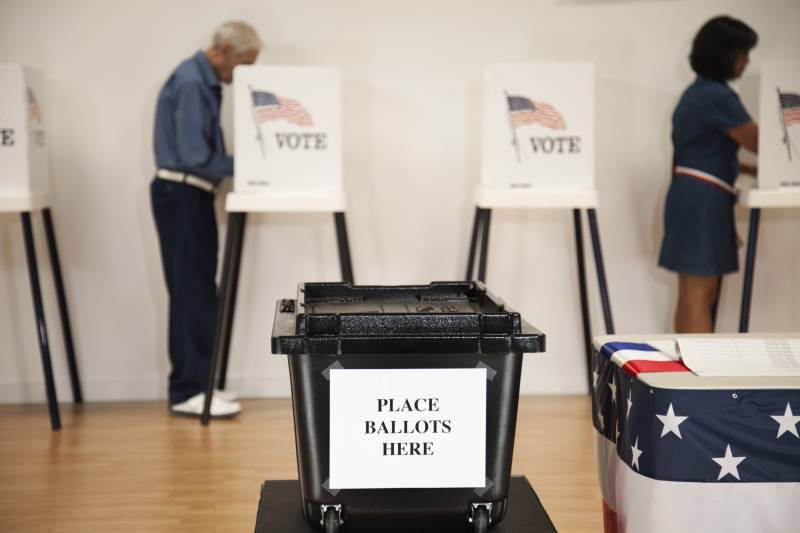Feinstein’s seat also happens to be up for reelection this year — for a full six-year term beginning in January. That’s the “full term” race on your ballot.
In short, you can make your senate choice for that short window from December to January and then pick a senator for the next full term, from January 2025 through January 2031.
If that sounds confusing, here’s some relief: the candidates running for both Senate terms are the same: Republican Steve Garvey and Democrat Adam Schiff.
Read more about the U.S. Senate race in KQED’s Voter Guide.
The propositions on your ballot are numbered — but not listed in order
Your ballot will contain 10 statewide propositions, asking you to vote on everything from climate funding and rent control to enshrining the right to same-sex marriage in the California constitution.
But there are a few wrinkles to know: Those propositions are numbered, but those numbers aren’t 1–10. The propositions will also appear out of order on your ballot. And they won’t run sequentially — after Proposition 6, for example, there’s a big jump to Proposition 32.
The reason is that the state Legislature placed Propositions 2 through 6 on the ballot, and they thought placing measures higher up on the ballot would make them more appealing to voters.
Basically, “they’re not in understandable order,” Alexander said — but don’t worry, your ballot hasn’t been misprinted. For the avoidance of doubt, here’s what the 10 statewide propositions on your ballot will be called:
- Proposition 2: School Bond
- Proposition 3: Same-Sex Marriage
- Proposition 4: Climate Bond
- Proposition 5: Housing Votes
- Proposition 6: Prison Labor
- Proposition 32: Minimum Wage
- Proposition 33: Rent Control
- Proposition 34: Prescription Drug Spending
- Proposition 35: Medi-Cal Funding
- Proposition 36: Criminal Penalties
Read more about the California propositions on your ballot in KQED’s Voter Guide.
You can vote for any presidential candidate — even if they’re not with the political party you’re registered with
When you register to vote, you’re asked to select whether you’d like to register with a political party — like the Republican Party or Democratic Party — or as a “no party preference” (NPP) voter, also known as an independent voter.
And in a primary election — like the one we had back in March — NPP voters automatically received ballots with no presidential party candidates. That’s because NPP voters have to take specific action to be able to vote for a presidential candidate in a primary race, and depending on which party that candidate belongs to, those actions include requesting a “crossover ballot” or straight-up re-registering with new political party preference.
The good news for this time around: In a general election like this one, you can vote for any candidate — not just the candidate with the party you’re registered with. “It doesn’t matter what party you’re registered with or if you’re registered with any party,” confirmed Alexander. “You can vote for any candidate of any party in all the contests.”
And finally, you don’t have to vote on everything on your ballot
In an ideal world, you’d have the time to read up on every measure and candidate on your ballot and make an informed choice about your vote on every single race. (This is the part where we remind you of the KQED Voter Guide, which breaks down every race in the Bay Area.)
But sometimes, things don’t work out that way — and while you might know your choice for president or how you want to vote in the U.S. Senate contest, perhaps you’re less certain about the statewide propositions or water district, and you’re running out of time to vote.
In this case, remember: You can vote in as many or as few races on your ballot as you want, and leaving certain races blank won’t invalidate your ballot or the other things you have voted on.
“I’m always reminding people that it’s not a test,” Alexander said. “You can vote for the things that you feel confident about, and you can leave other choices blank.”
“If you only want to vote on one thing, that’s fine. If you want to vote on everything, that’s fine too,” Alexander said. “But if you don’t feel good about voting on something, it’s fine to skip it and move on to the next item.”


